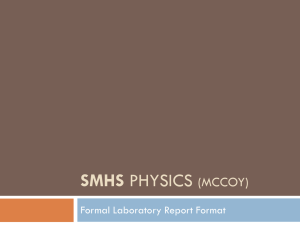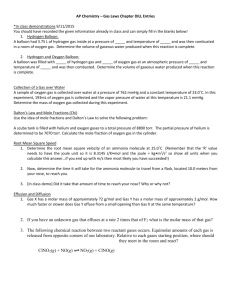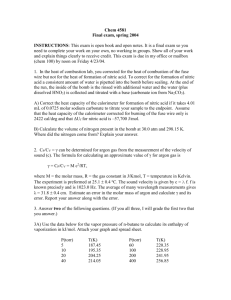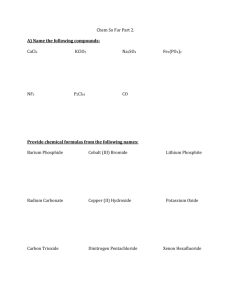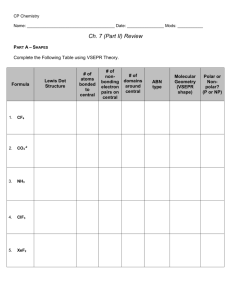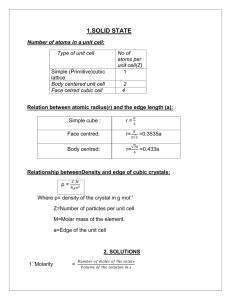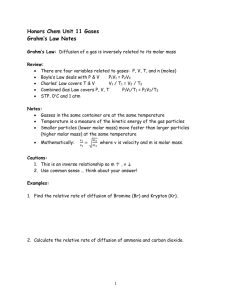Name______________________________ States of Matter 1996
advertisement
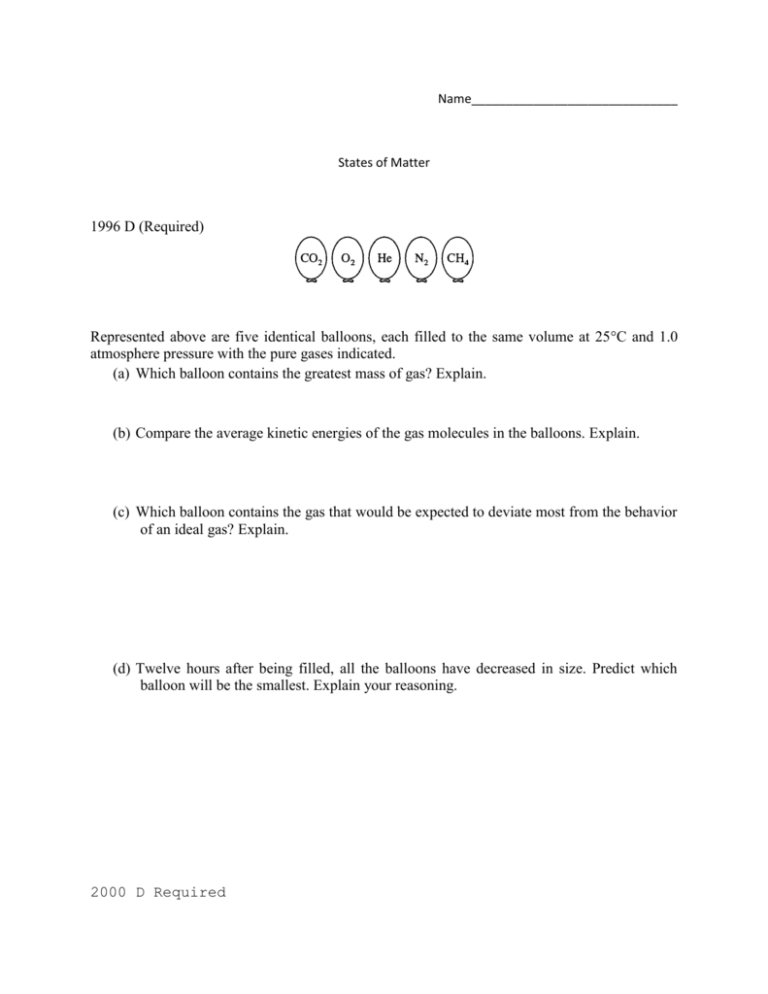
Name______________________________ States of Matter 1996 D (Required) Represented above are five identical balloons, each filled to the same volume at 25C and 1.0 atmosphere pressure with the pure gases indicated. (a) Which balloon contains the greatest mass of gas? Explain. (b) Compare the average kinetic energies of the gas molecules in the balloons. Explain. (c) Which balloon contains the gas that would be expected to deviate most from the behavior of an ideal gas? Explain. (d) Twelve hours after being filled, all the balloons have decreased in size. Predict which balloon will be the smallest. Explain your reasoning. 2000 D Required The molar mass of an unknown solid, which is nonvolatile and a nonelectrolyte, is to be determined by the freezing-point depression method. The pure solvent used in the experiment freezes at 10C and has a known molal freezing-point depression constant, Kƒ. Assume that the following materials are also available. • test tubes • stirrer • stopwatch • graph paper • thermometer • balance • ice • hot-water bath • pipet • beaker (a) Using the two sets of axes provided below, sketch cooling curves for (i) the pure solvent and for (ii) the solution as each is cooled from 20C to 0.0C Pure Solvent Solution (b) Information from these graphs may be used to determine the molar mass of the unknown solid. (i) Describe the procedure to take the measurements that must be made to determine the molar mass of the unknown solid by this method. (ii) Show the setup(s) for the calculation(s) that must be performed to determine the molar mass of the unknown solid from the experimental data. (c) Suppose that during the experiment a significant but unknown amount of solvent evaporates from the test tube. What effect would this have on the calculated value of the molar mass of the solid (i.e., too large, too small, or no effect)? Justify your answer. (d) Show the setup for the calculation of the percentage error in a student’s result if the student obtains a value of 126 g mol-1 for the molar mass of the solid when the actual value is 120. g mol-1. 2001 D Required Answer the questions below that relate to the five aqueous solutions at 25C shown above. (a) Which solution has the highest boiling point? Explain. (b) Which solution has the highest pH? Explain. (c) Which solution would be the least effective conductor of electricity? Explain. 2009 form B 2 H2O2(aq) → 2 H2O(l) + O2(g) 3. The mass of an aqueous solution of H2O2 is 6.951 g. The H2O2 in the solution decomposes completely according to the reaction represented above. The O2(g) produced is collected in an inverted graduated tube over water at 23.4°C and has a volume of 182.4 mL when the water levels inside and outside of the tube are the same. The atmospheric pressure in the lab is 762.6 torr, and the equilibrium vapor pressure of water at 23.4°C is 21.6 torr. (a) Calculate the partial pressure, in torr, of O2(g) in the gas-collection tube. (b) Calculate the number of moles of O2(g) produced in the reaction. (c) Calculate the mass, in grams, of H2O2 that decomposed. (d) Calculate the percent of H2O2 , by mass, in the original 6.951 g aqueous sample. (e) Write the oxidation number of the oxygen atoms in H2O2 and the oxidation number of the oxygen atoms in O2 in the appropriate cells in the table below. (f) Write the balanced oxidation half-reaction for the reaction.
